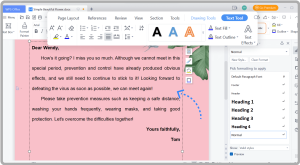Companies thinking about implementing this powerful ERP system would do well to familiarise themselves with Business Central price. To aid companies in making educated decisions, this article explores the several aspects that affect the price of Business Central and offers a thorough summary.
There is no universally applicable price plan for Business Central. The total cost is affected by various important components that make it up. Among the most important considerations is the sort of user. There is a price structure in Business Central that distinguishes between “Full Users” and “Team Members.” Full Users are able to manage everything from finances and operations to sales and customer service because they have access to all of the features. Contrarily, team members are usually confined to doing vital duties such as data entry and reporting, and they have limited access. Businesses may optimise expenses by assigning the proper user type to each employee, thanks to this tiered system that allows them to adjust Business Central pricing to their specific needs.
Business Central cost is also heavily influenced by the deployment option. Organisations have the option to deploy either in the cloud or on-premises. Cloud installations, also known as SaaS, usually use a subscription-based approach. In this model, companies pay a regular price to get access to the software and all the services that come with it, including upgrades and maintenance. On the other hand, a company can host the system on its own servers and buy the software licenses in advance for an on-premises deployment. More hardware and IT infrastructure investments might be necessary for this option. Business Central pricing is heavily affected by the option between cloud and on-premises deployments, thus it’s important for businesses to carefully assess their resources and technical skills when making this decision.
Pricing for Business Central can also differ when working with different implementation partners. Businesses rely on implementation partners to help them adopt and customise Business Central to their specific needs. Training, support, and continuous maintenance are just a few of the many services they provide. The implementation partner’s quality of service and competence can affect the pricing of Business Central. If you want your implementation to go well and save you money in the long run, you need to work with a reliable and knowledgeable partner.
Beyond these fundamental elements, there are other variables that can impact the cost of Business Central. All necessary accessories and personalisations are part of this. Additional modules or customisations may be necessary for businesses with complex procedures or specific industry needs in order to make Business Central fit their unique needs. The final price of Business Central may change as a result of these upgrades. It is critical to evaluate these needs carefully and include them in the budget.
In order to make educated choices, it is crucial to comprehend the many parts of the Business Central price. Considerations such as user kinds, deployment options, implementation partner services, and possible add-ons should be part of a thorough needs evaluation for businesses. This all-encompassing method guarantees that the selected Business Central pricing model is in line with the company’s financial plan and future objectives.
It takes serious thought and preparation to successfully navigate the pricing of Business Central. To learn about the many price alternatives and choose the model that works best for their needs, businesses should have detailed conversations with possible implementation partners. By working together, we can keep prices down and make sure everything is clear.
Pricing structures for Business Central are typically built to be both flexible and scalable. Business Central cost can be adjusted by adding users or functionalities as needed, allowing organisations to adapt to their growing needs. Because of its scalability, Business Central can be used at every stage of a company’s lifecycle without breaking the bank.
Businesses should take a strategic strategy to optimise the pricing of Business Central. To do this, they must first identify business needs, then weigh the pros and cons of various deployment choices, and finally choose a trustworthy implementation partner. To keep their Business Central pricing in line with their budget and get the most out of it, companies should follow these measures.
If your company is interested in utilising this robust ERP solution, you must first familiarise yourself with the complexities of Business Central pricing. Businesses can make well-informed decisions and guarantee a smooth implementation by thoroughly examining the several elements impacting the price of Business Central.
Businesses may maximise their return on investment and set themselves up for long-term success by researching and understanding Business Central pricing. In order to reach company goals and make the most of Business Central, this proactive strategy is essential.




